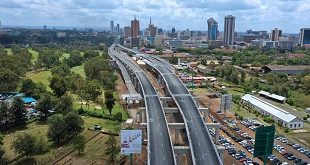AK-47 wielding President spends week in volatile region. But can mission cure historical grievances?
April 6 found President Yoweri Museveni’s convoy traversing the western border district of Bundibugyo; all the way to Uganda-Congo border. The President who was clad in UPDF battle fatigues and carried an AK 47 rifle was on a fact-finding mission. Since February, at least 28 people have been killed in a spate of violent attacks sweeping through the district. Another nine people have been killed in neighbouring Kasese district. Even as the President’s convoy was snaking through Bundibugyo, the killers pounced on two soldiers of the Uganda army near their military base at Kanyamwirima UPDF detachment. The attackers hacked them and left them for dead. But they were rescued and rushed to hospital. In 2014, Bakonzo youth known as “Esyomango” attacked the same military barracks in Kanyamwirima in a fight that left at least 90 people dead. Most were Bakonzo, writes Mubatsi Asinja Habati
So when Museveni on April 7 called a meeting with local government, cultural and opinion leaders from Bundibugyo at the state lodge in Fort Portal in neighbouring Kabarole district, he was in no-nonsense mood.
The leaders, mainly from Bwamba County, had written an explanation in form of memorandum that they wanted to read out to the President. But he cut them off. “This meeting is not about reading reports,” he told them, “I am here to find out the causes of this conflict.”
Museveni was referring to attacks that began on Feb. 27 in Busengerwa, Busaru sub-county; a Bamba dominated area in Bundibugyo. A woman only identified as Thungo was being attacked by a mob. Her crime was she supported an LC 5 candidate Mutegeki as opposed to another candidate. As Thungo wailed Nickson Bwambale, a drug shop attendant responded to the alarm only to be shot dead and his house set ablaze. In retaliation, Bwambale’s friends attacked the rival’s supporter Taddeo Mugisa’s home and killed his wife and five children. In Mugisa’s neighbourhood, unidentified people also attacked a home and hacked to death Jane Kalungi, a pregnant woman, with her 3-year-old child. The conflict spread and by April the death toll in Bundibugyo alone was at least 28 people. In Kirumya Sub-county, a Bamba-dominated area, the supporters of one of the candidates slept in the bush that night for fear of being killed. People who attended the meetings told The Independent that the President appeared to have a million queries for both current and incoming leaders at Local Council 5 and 3, area MPs, councilors, and opinion leaders.
“Who started the killing in Busengerwa?” he asked. “Why are services denied to Bughendera? Why do you treat the Bakonzo the way the Batoro treated you before the Rwenzururu movement?”
Ethnic roots
Museveni’s questioning betrayed his belief that the conflict was rooted in ethnic divisions. That is possibly because he knows that Bundibugyo was in 1974 sliced off the old Toro kingdom in a bid to settle ethnic conflict between three ethnic groups; the Bakonzo, Bamba, and Batoro. He also knows that in 2010, he sliced the district further Ntoroko district to the north. It was meant to be for the Batuku who felt locked out of Bundibugyo which was to be for the Bamba and the Bakonzo; erstwhile allies, under the Rwenzururu freedom movement against the Batoro.
The result of the slices was a patchwork of tiny districts that, when compared to bigger districts like neighbouring Hoima, looks like the fragment plots of a family with too little land and many conflicting demands.
It could get worse because the Bakonzo have fallen out with the Bamba. On Feb. 28 clashes blamed on ethnic rivalry left at least 12 people dead and more than 50 houses burnt in various parts of Bundibugyo.
The clashes followed the declaration of the district LC5 chairman results. The Returning Officer, Daniel Nayebale, could be to blame. He first declared Jolly Tibemanya (a Mwamba and Independent) winner against Ronald Mutegeki (a Mubwisi NRM) but later reversed the results. Although all candidates were from NRM, those favoured by the Bamba cultural insitution lost the primaries. Soon after, the Obudhingiya Bwa Bwamba deputy premier, Rev Tomasi Kamuhanda, and chief elder Fulgensio Bamwitirebye started campaigning for the losers when they competed as independents. They still lost the election. The Bakonzo, it is alleged, tend to vote as a block. Therefore, a candidate of their choice will always win. And the Bamba are not happy.
Now the Bakonzo say they want a district of their own. This could see Bundibugyo, which was carved into two counties; Bwamba County for the Bamba and Bughendera County for the Bakonzo, split into two.
Museveni heard the demand for the district on April 8 when he met leaders and elders from Bughendera County, mainly Bakonzo. But it was not for the first time. The issue was raised during the recent presidential campaigns and Museveni told the people of Bughendera that he would “look into their demand” a subtle promise. Possibly based on this, Museveni was voted massively and an NRM candidate, Christopher Kibanzanga, was elected MP. If the district finally happens, it could have about 70,000 people – smaller than most districts, but same or slightly more populated than Ntoroko.
Dividing up the meetings was a smart move because the Bakonzo were clearly agitated. They said they are treated like “refugees” in Bundibugyo, yet they are the dominant group in Bughendera. The Bamba are the majority in Bwamba County. Also, some Bakonzo have always wanted to impose their king, Omusinga Charles Wesley Mumbere, in Bundibugyo. This causes friction as the Bamba also claim that all land in Bundibugyo belongs to their king, Omudhingiya Martin Kamya and that all people in Bundibugyo are under him. Sensing the tension between them, Museveni who is the UPDF commander-in-chief deployed a battalion of soldiers.
Hearing the Bakonzo cry of marginalization possibly sounded ironical for Museveni who has the big picture of the region. Museveni, who has been battling to find a solution to the tension, knows that less than 100kms away in Kasese, the Bakonzo are the dominant ethnic group and the Bamba cry of marginalisation.
 The Independent Uganda: You get the Truth we Pay the Price
The Independent Uganda: You get the Truth we Pay the Price





